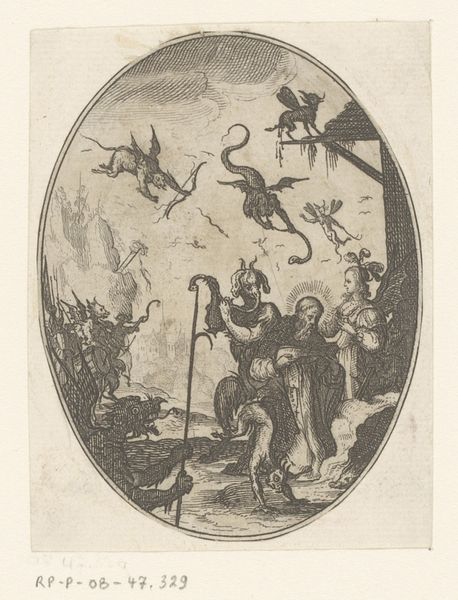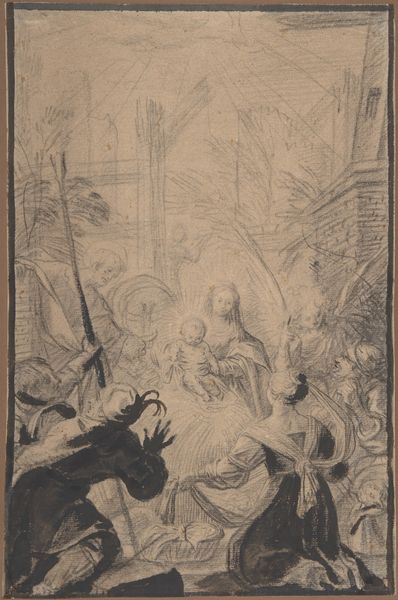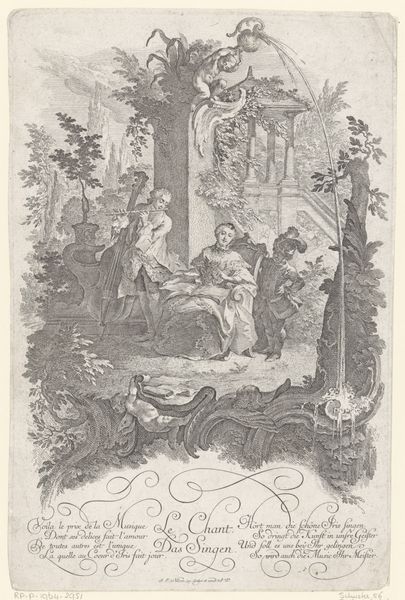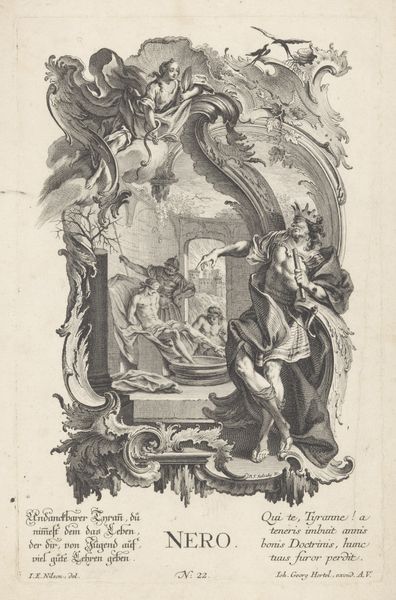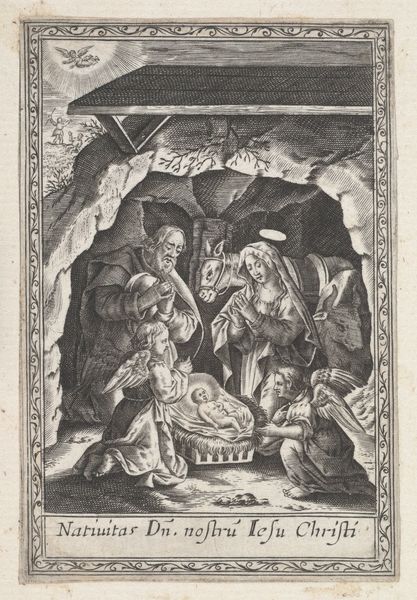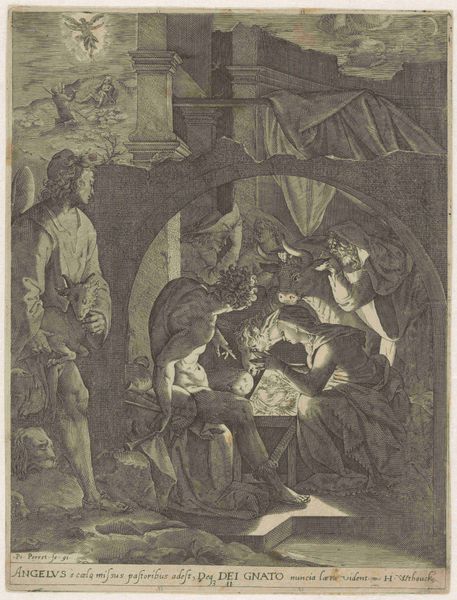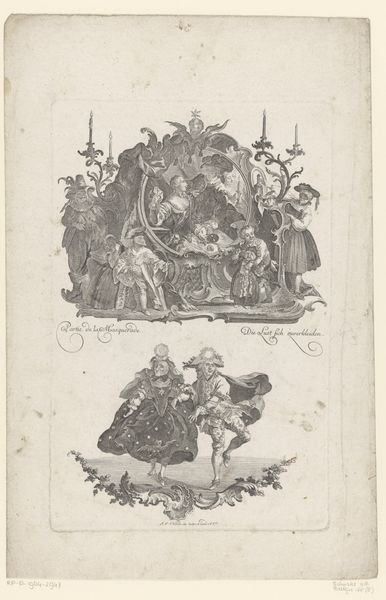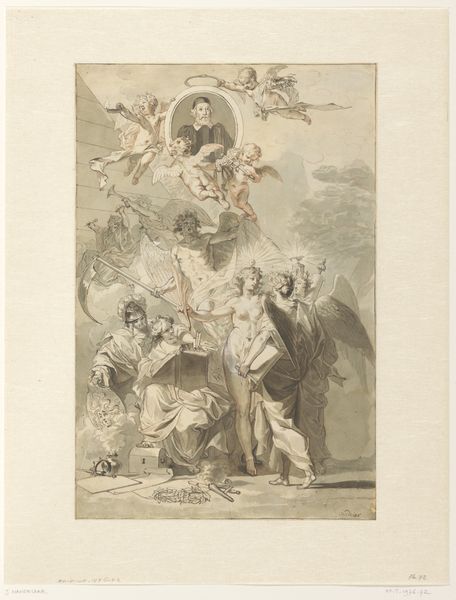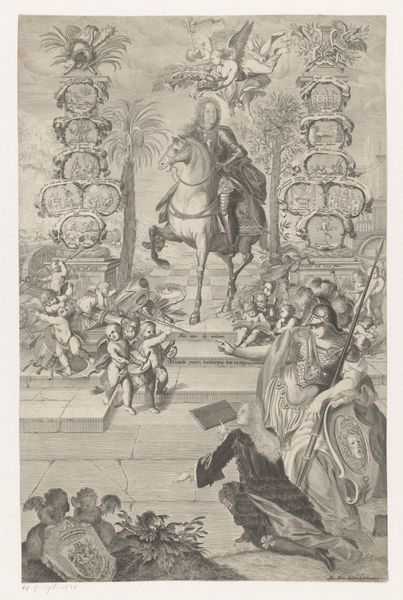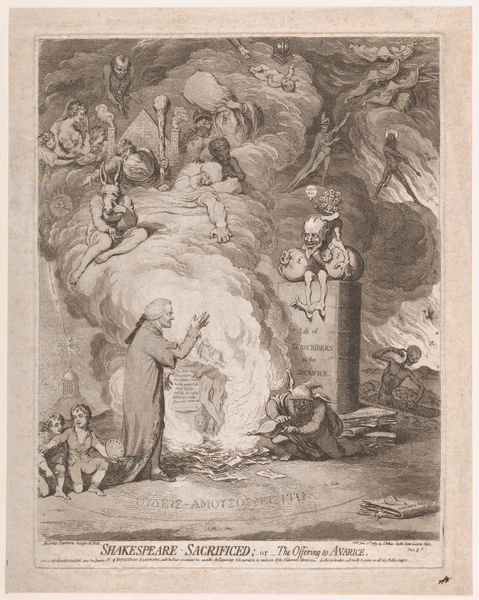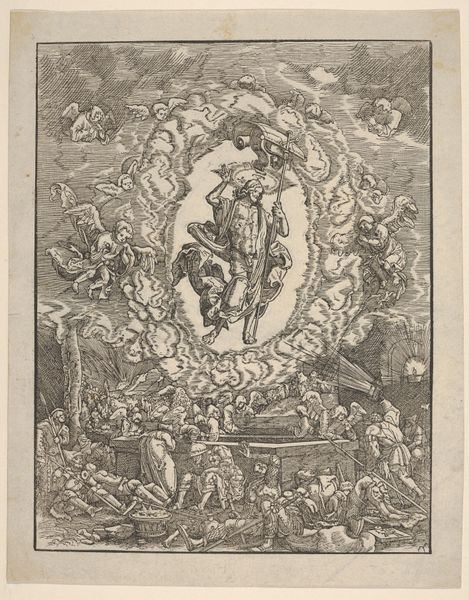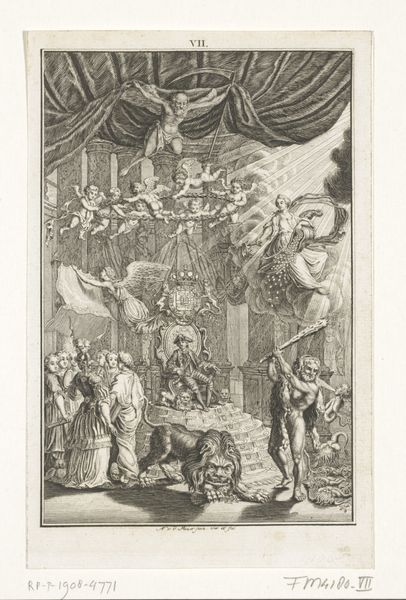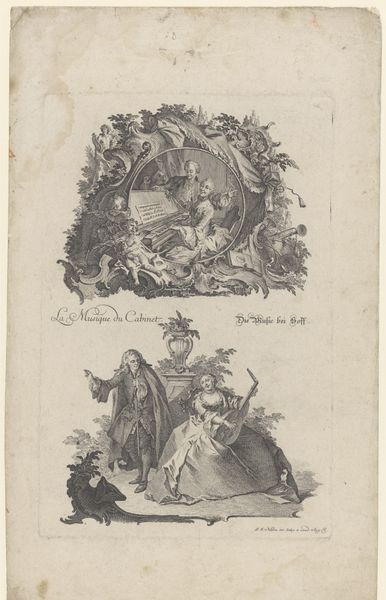
engraving
#
portrait
#
baroque
#
old engraving style
#
figuration
#
line
#
history-painting
#
engraving
Dimensions: height 320 mm, width 197 mm
Copyright: Rijks Museum: Open Domain
Curator: Here we have "Pythagoras," an engraving created sometime between 1731 and 1771, now housed in the Rijksmuseum. What strikes you about it? Editor: The energy! It’s Baroque to its core, wouldn't you agree? All those swirling lines and figures seemingly caught in mid-motion. It’s incredibly dynamic, considering the limitations inherent in engraving. Curator: Indeed. Setletzky, the artist, uses line masterfully to create a sense of depth and movement. Beyond the purely aesthetic though, consider the subject matter. This engraving presents Pythagoras, the philosopher and mathematician, likely in a moment of teaching or revelation. The inclusion of historical figures, within an idealized frame tells us how previous generations understood this philosopher, someone revered during the European Enlightenment. Editor: And look at how he’s positioned—almost literally elevated on that globe! The emphasis on idealized forms and balanced composition directs my eyes to his pointing figure as a compositional peak, making Pythagoras seem more like a deity or mystical prophet rather than just a mathematician, or even a philosopher! Curator: The inscription is fascinating. Look, it states, "The teacher one must here honor with silent praise; It is enough: He has said it." This reinforces the image of Pythagoras as an unchallengeable authority. Considering that it’s presented as an engraving, we must note the value of the artwork as a multiple. Editor: So its intent can be considered that of educational and divulgative? It reinforces that the function follows the form here: Pythagoras as an omniscient teacher, at the apex of a grand, awe-inspiring, elaborate design. The lines create light and dark contrasts, lending the whole thing a sense of drama! Curator: Exactly, the distribution via print made knowledge more accessible, but also cemented the authority of figures like Pythagoras. Editor: It's almost a deification through design! An exercise of admiration, with remarkable artistic confidence and engraving mastery, to be sure. Curator: Agreed. Seeing how these historical figures were publicly presented in printed form gives us clues as to the cultural values of the era. Editor: A Baroque exercise of intellectual idolatry. Food for thought!
Comments
No comments
Be the first to comment and join the conversation on the ultimate creative platform.
